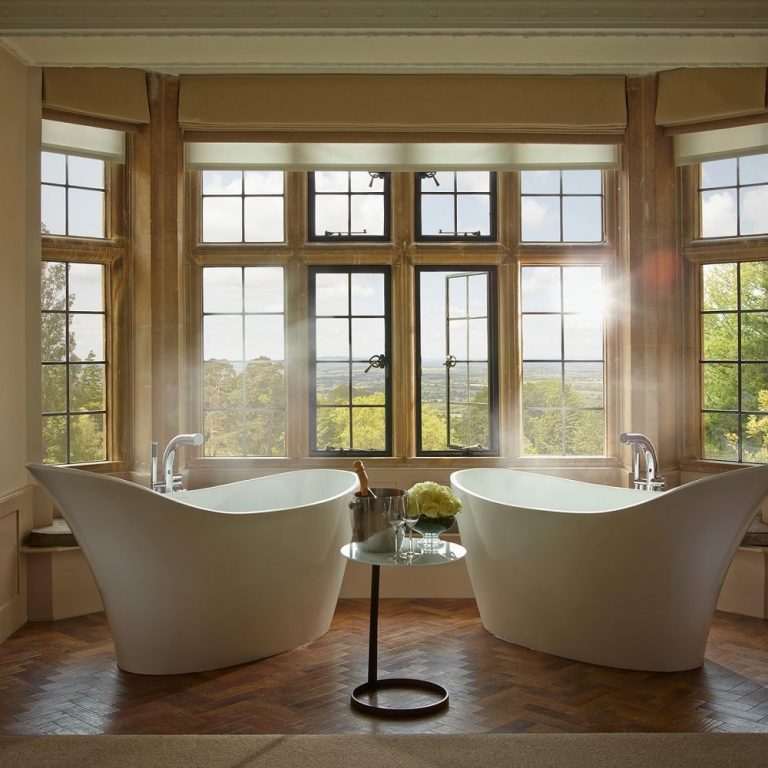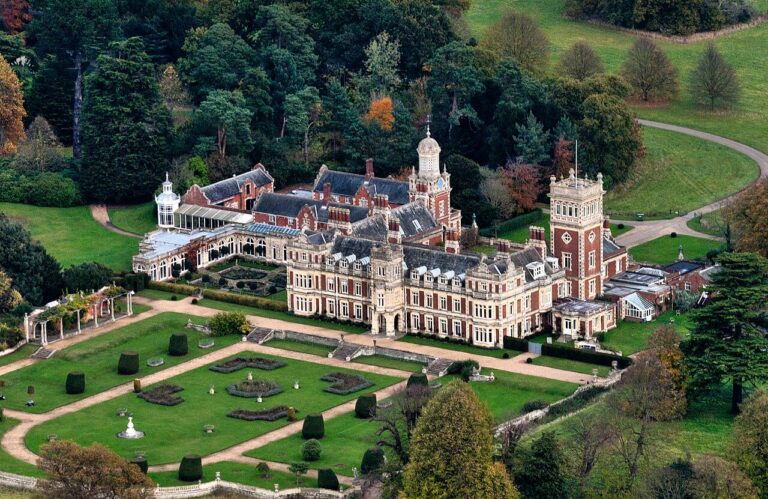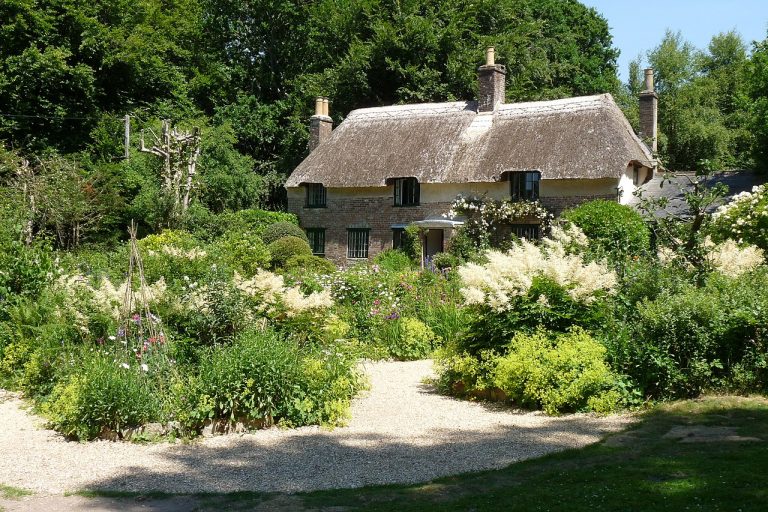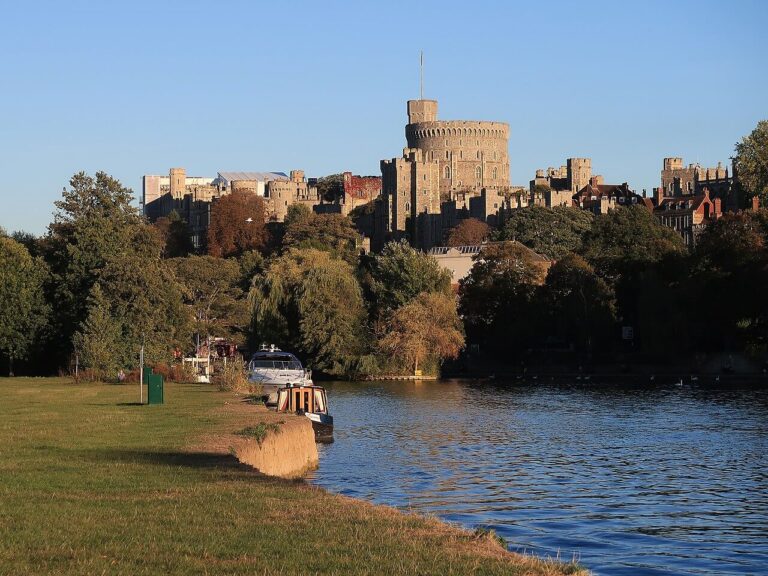The Best Castles and Stately Homes in Warwickshire
Warwickshire is a county of writers. Famous English writers such as William Shakespeare and George Elliot were born in this English county. And this is also reflected in the castes and historic country houses in Warwickshire. Many of these historic places have a connection to some of England’s best writers.
This article shows the best castles and country houses (or stately homes) in Warwickshire. Many of them have played an important part in English history. They have connections to the great Kings and Queens of England (and not always in a good way) and to some of England’s most influential families.
These are the best castles and country houses in Warwickshire that you can visit.
Castles in Warwickshire
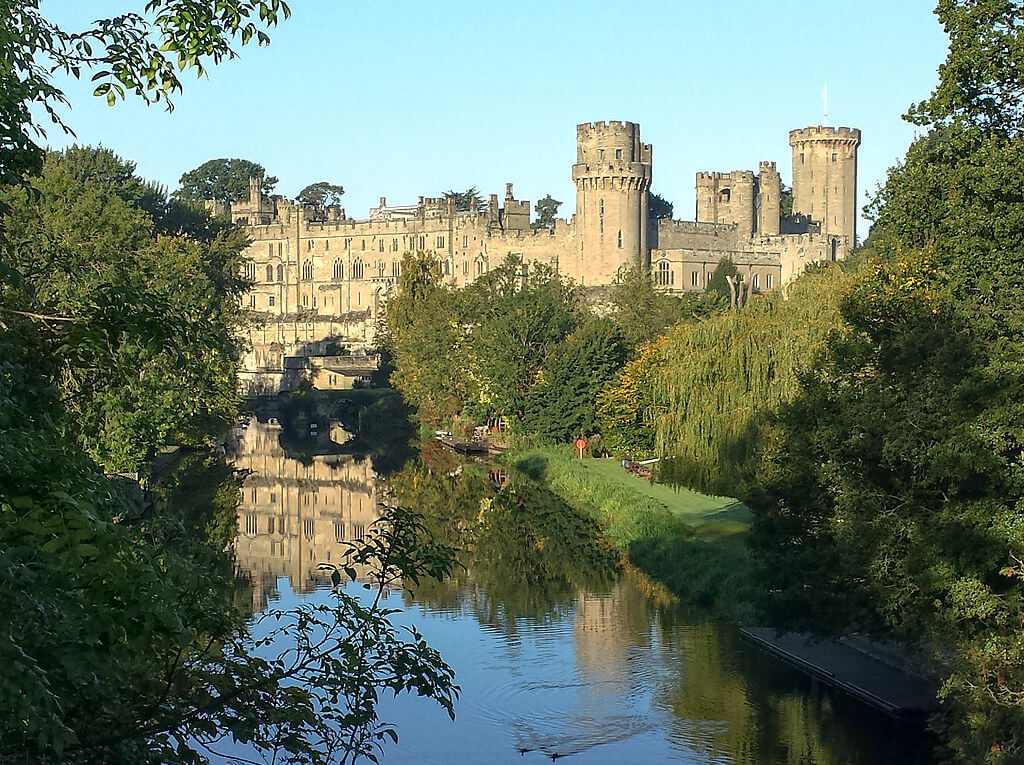
Warwick Castle
Warwick Castle is a medieval castle at a bend of the River Avon, though its origins date back to a wooden fort built by William the Conqueror in Norman times. The wooden motte-and-bailey castle was built in the 12th century but during the hundred Years War the façade was refortified making it one of the finest examples of military architecture.
The castle was a military stronghold until 1604 when the castle was granted to Sir Fulke Greville who turned it into a country house.
Where: Warwick
Built: 12th century
Visitor information: the castle is open though the year. Visit the website for current opening hours.
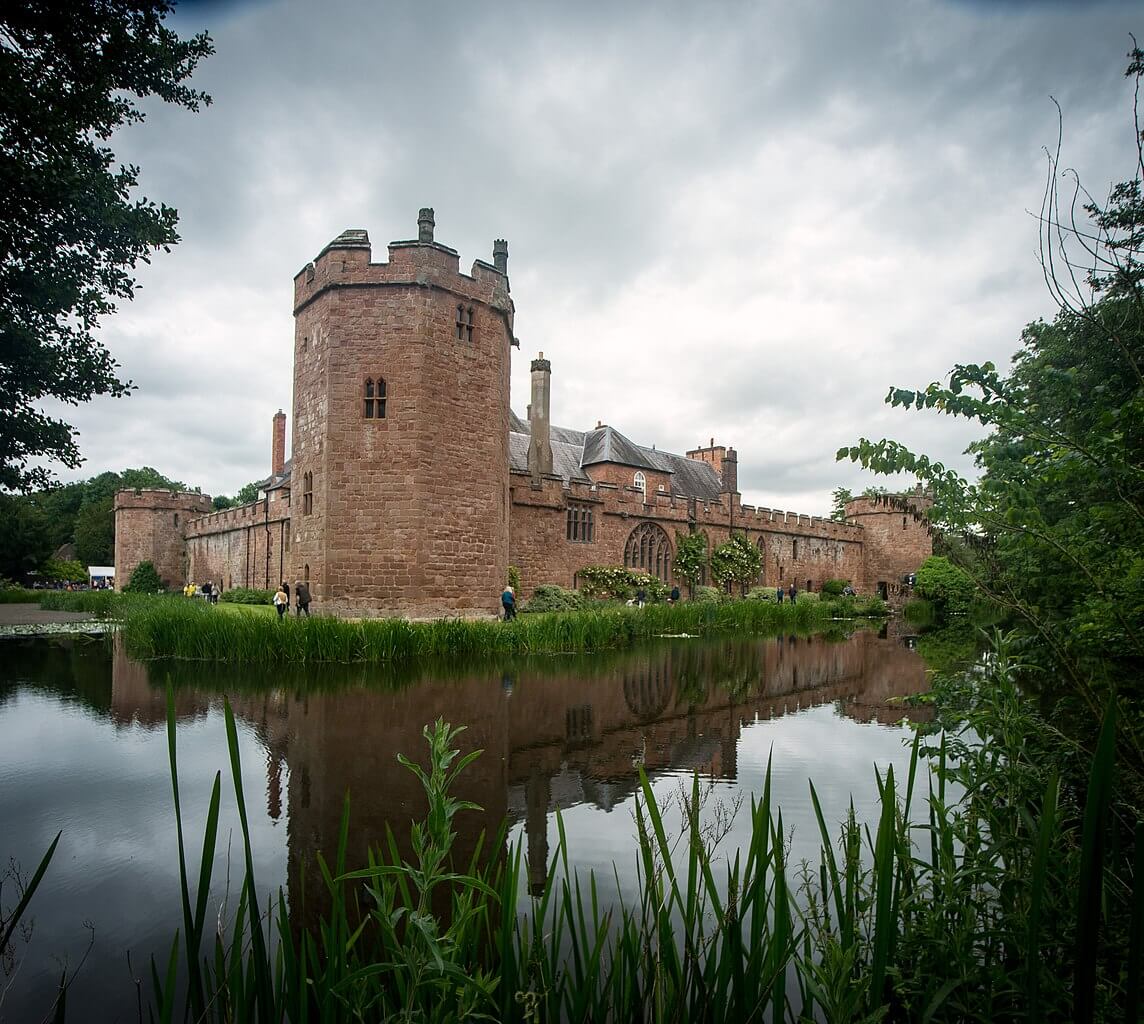
Maxstoke Castle
Maxstoke Castle is a privately owned moated castle in Warwickshire. The castle was built in the 14th century by Sir William de Clinton, 1st Earl of Huntingdon. The rectangular castle has octagonal towers at each angle. A gatehouse is located on the east and a residential range on the west.
The castle is almost unchanged since its construction which is unusual. Inside the castle, you find items that have an important link with English history. There is a 15th century chair upon Henry VII was crowned after the Battle of Bosworth. And also a table owned by Sir Everard Digby around which the Gunpowder Plot (a plan to assassinate King James I) was planned.
Where: Maxstoke
Built: 1345
Visitor information: The castle is open once a year, usually in min-June. Visit the website for more information.
Country Houses in Warwickshire
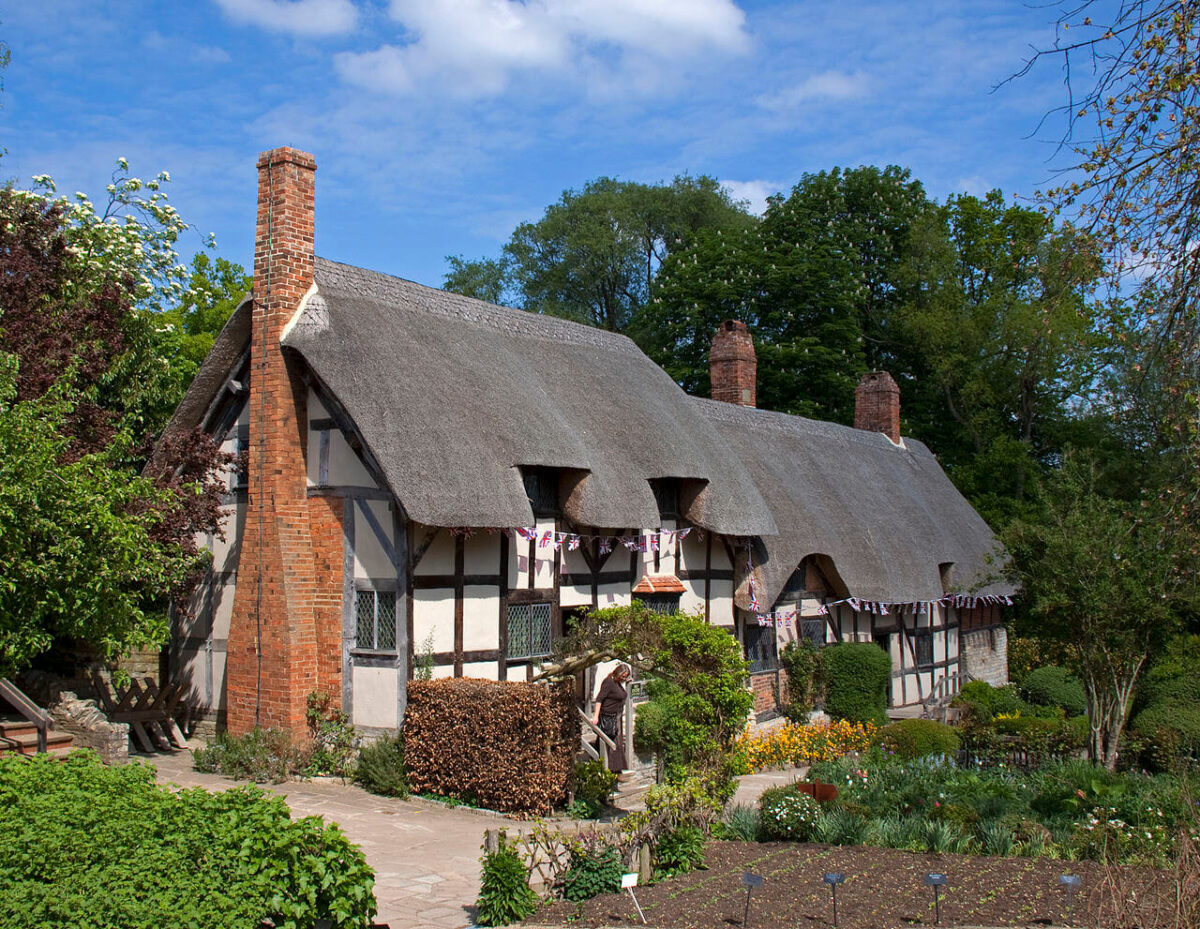
Anne Hathaway’s Cottage
Set in the village of Shottery stands the farmhouse where Anne Hathaway was born. We’re not talking about the Hollywood actress here, but the wife of William Shakespeare.
Though the house is called a cottage, it is bigger than that and during Anne’s time the house was known as Hewlands Farm.
The earliest part of the house was built before the 15th century but it has been extended multiple times over the centuries. Much of the original features have survived and inside you can even fnd the original Hathaway bed.
Today, Anne Hathaway’s cottage is open as a historic house museum where you can learn more about 13 generations of Hathaway family history.
The house is set in a beautiful cottage garden designed by Ellen Willmott that includes a sculpture trail inspired by William Shakespeare’s plays.
Where: Shottery
Built: 1463
Style: Tudor
Visitor information: The cottage is open to visitors Monday-Sunday though closed in the Winter season. You can combine a visit to the cottage with a visit to Shakespeare’s Birthplace & Shakespeare’s New Place. Visit the website for current opening hours.
See also: Visit Famous Writers Houses in England
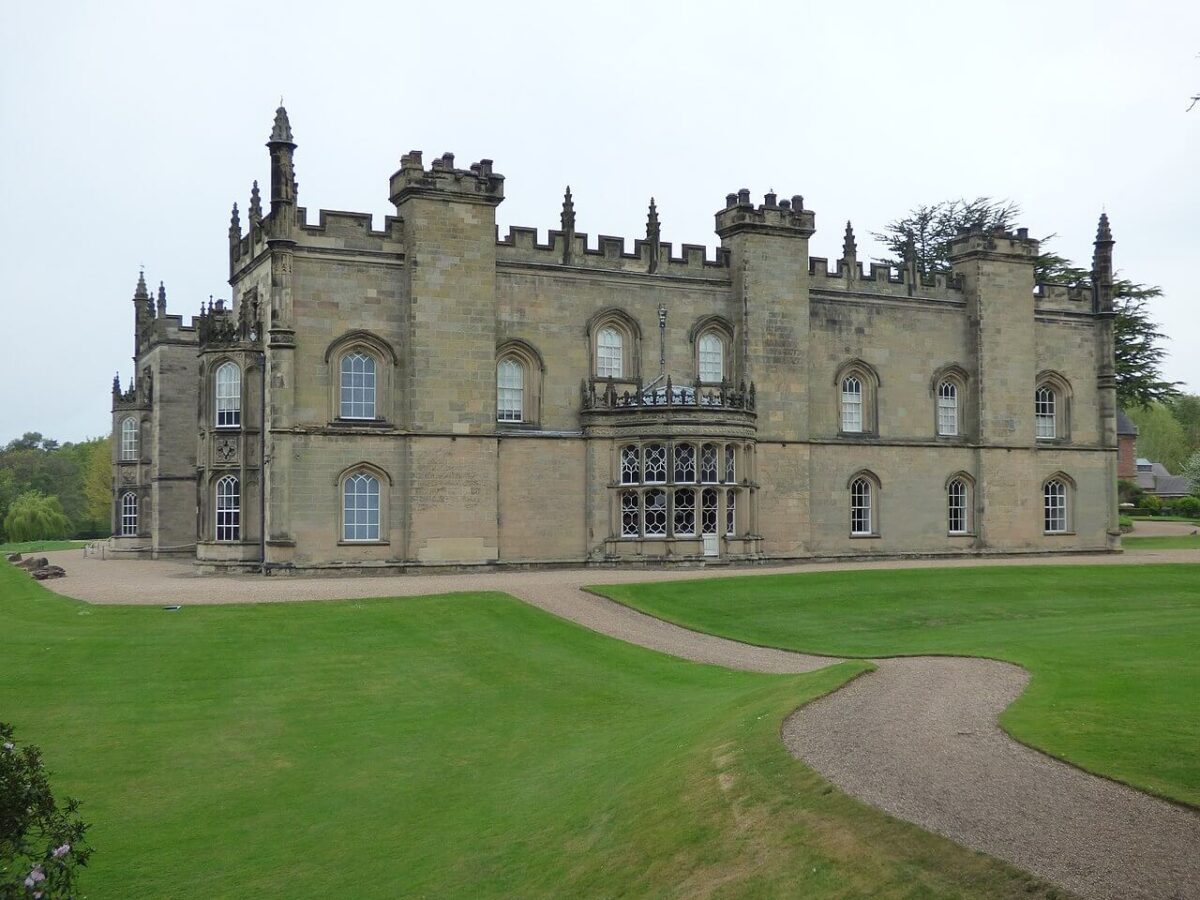
Arbury Hall
Arbury Hall is a country house that was built on the ruins of Arbury Priory, a 12th century Augustinian Priory in Nuneaton. The Elizabethan manor house has been the home of the Newdegate/Newdigate family for more than 400 years.
It’s current Gothic appearance date back to the second half of the 18th century and was the work of Henry Keene for Sir Roger Newdigate.
Surrounding the manor lie 18th century landscaped gardens and 100 acres of lakes and parkland.
19th century writer George Elliot (Middlemarch, Daniel Deronda) was born on one of the farms that stand on the estate. Her father was the estate’s land agent.
Where: Nuneaton
Built: 16th century with 18th century remodel
Style: Gothic
Visitor information: The hall and gardens are open on Bank Holiday weekends from April to August. Visit the website for specific dates. Guided tours for groups of 25+ are also available.

Baddesley Clinton
Set in the heart of the Forest of Arden stands Baddesley Clinton, a grand country estate whose history goes back 500 years.
The manor was originally built in the 1400s. But much of the house you see today was built by Edward Ferrers from 1526 onwards. Henry Ferrers the Antiquary built the Great Hall and installed much of the stained glass with the family’s coat of arms. The Great Hall was rebuilt in brick in the 18th century but the style of the building stayed the same.
That Warwickshire is a county of novelists also shows in Baddesley Manor as writers Lady Geogiana Chatterton and Edward Heneage Dering lived in the house.
The Ferrers family – who lived in this house for 500 years – always stayed loyal to their Catholic faith. The huse became a hiding place for Jesuit priests and you can still see three priest holes from this time.
Where: Baddesley Clinton
Built: 13th century
Style: Tudor
Visitor information: the house is now owned by the National Trust. Visit the website for current opening hours.

Charlecote Park
Charlecote Park is a grand country estate on the banks of the River Avon. The house was built in 1558 by Sir Thomas Lucy and is considered one of the first great Elizabethan houses in England. Queen Elizabeth I also stayed at Charlecote, that room is now a drawing room.
For centuries, the estate was owned by the Lucy family. And though the history of the house dates back to Elizabethan times, the current house is mainly Victorian. It was George Hammond Lucy who inherited the house and restored the house in original style.
The house also has a link with Warwickshire’s most famous resident: William Shakespeare. The legend goes that a young William Shakespeare was caught poaching at Charlecote.
Where: Charlecote
Built: 1558
Style: Elizabethan
Visitor information: the house is owned by the National Trust. Visit the website for current opening hours.

Compton Verney House
Compton Verney House is an 18th century country house that is now the home of the Compton Verney Art Gallery.
The country house was built in 1714 by Richard Verney, 11th Baron Willoughby de Broke.In the 1760s the house was remodeled and the interior redesigned by Robert Adam. The parkland was designed by Lancelot “Capability” Brown in 1769.
In 1993, the run down estate was restored to a gallery. The Compton Verney Art Gallery shows a variety of art including Neapolitan art from 1600 to 1800, Northern European medieval art, and British portraits.
Where: Compton Verney
Built: 1714
Style: Neoclassical
Visitor information: the museum is open Tuesday-Sunday and Bank Mondays. Visit the website for more information.
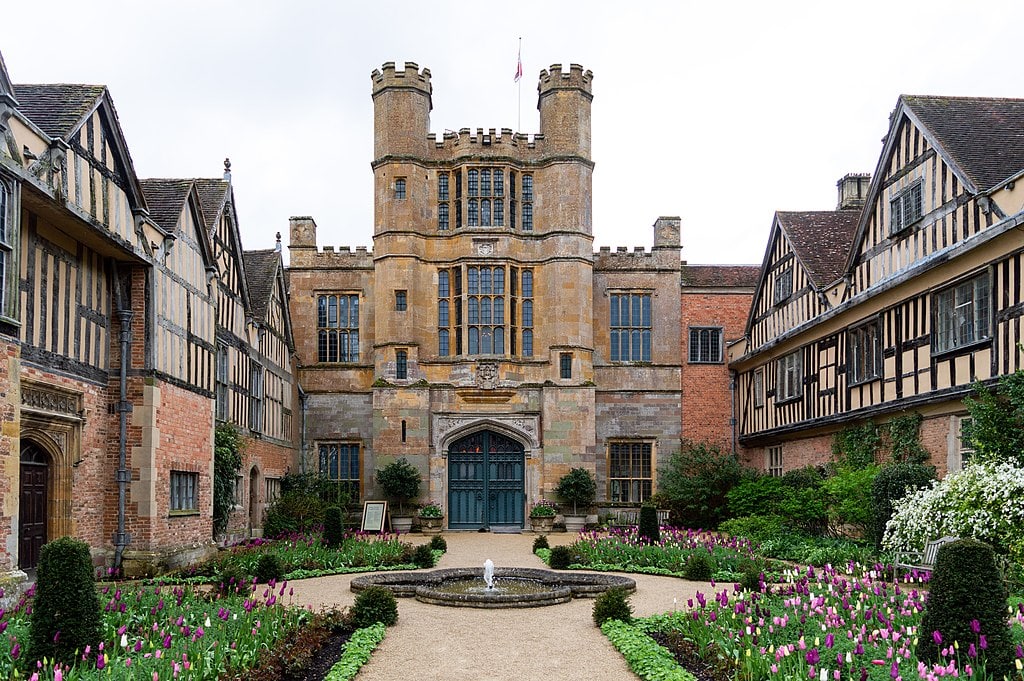
Coughton Court
Coughton Court is a Tudor country house in Warwickshire. The house, with crenelated façade, consist of the Tudor gatehouse and two Strawberry Hill Gothic wings.
The estate has been in the Throckmorton family since 1409. The Throckmorton family was close to the English royals. One of the daughters of the house was the lady’s maid of Queen Elizabeth I and the aunt of Katherine Parr (Henry VIII’s 6th wife) lived at the estate.
The Throckmorton family was Catholic and at one time has a priest hole. The estate also plays a prominent role in the Throckmorton Plot to murder Queen Elizabeth and the Gunpowder Plot to kill King James I.
Where: Alcester
Built: 1536
Style: Tudor/Strawberry Hill Gothic
Visitor information: the house is owned by the National Trust. Visit the website for current opening hours.
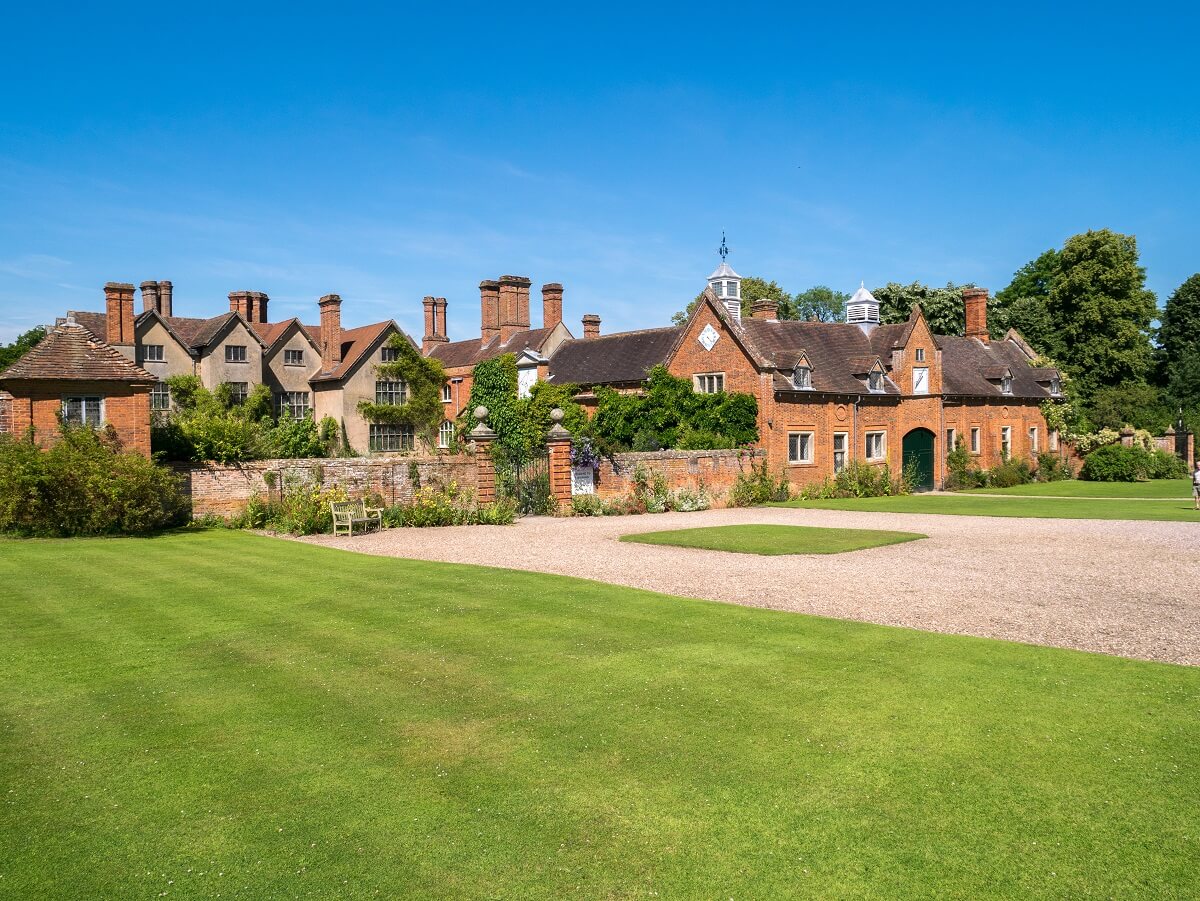
Packwood House
Packwood House is a 16th century Tudor manor house in Warwickshire. The house was built by John Fetherston, though it that time it was a modest farmhouse.
In 1925, the house was inherited by Graham Baron Ash who created the Tudor-style house you see today. He decorated the home with a large collection of 16th and 17th century furniture (some coming from Baddesley Clinton, which we’ve seen earlier in this article). The great barn was transformed into a Tudor-style hall which was connected to the house by the Long Gallery.
Surrounding the house is a Yew Garden, designed by John Fetherston in the 17th century, with over 100 trees.
Where: Lapworth
Built: 16th century
Style: Tudor
Visitor information: the house and garden are open to the public. Visit the website for more information.

Stoneleigh Abbey
Stoneleigh Abbey has a rich history that involves Queen Victoria, King Charles I, and Jane Austen. As the name suggests, Stoneleigh Abbey started out at a Cistercian monastic house in 1154. After the Dissolution of the Monasteries, the estate was acquired by Sir Thomas Leigh, Lord Mayor of London.
He built a house, which is now the north and east wings of the current house. Sir Thomas was granted a barony by Charles I for offering hospitality when the gates of Coventry were closed to the king during the English Civil War.
In 1714, the house was enlarged when a new Baroque-style palatial wing was built after a design by Francis Smith of Warwick. In 1806 the estate was inherited by Rev. Thomas Leigh. When he went to view his new estate he brought his cousin Cassandra Austen and her two daughters: Cassandra and Jane.
In 1858, Queen Victoria stayed at Stoneleigh Abbey for two nights. She stayed in a suite of rooms with mahogany furniture painted white and gold.
Where: Kenilworth
Built: 16th century
Style: Tudor/Baroque
Visitor information: the house is open by guided tour only. The rounds are open Sunday-Thursday. Visit the website for more information.
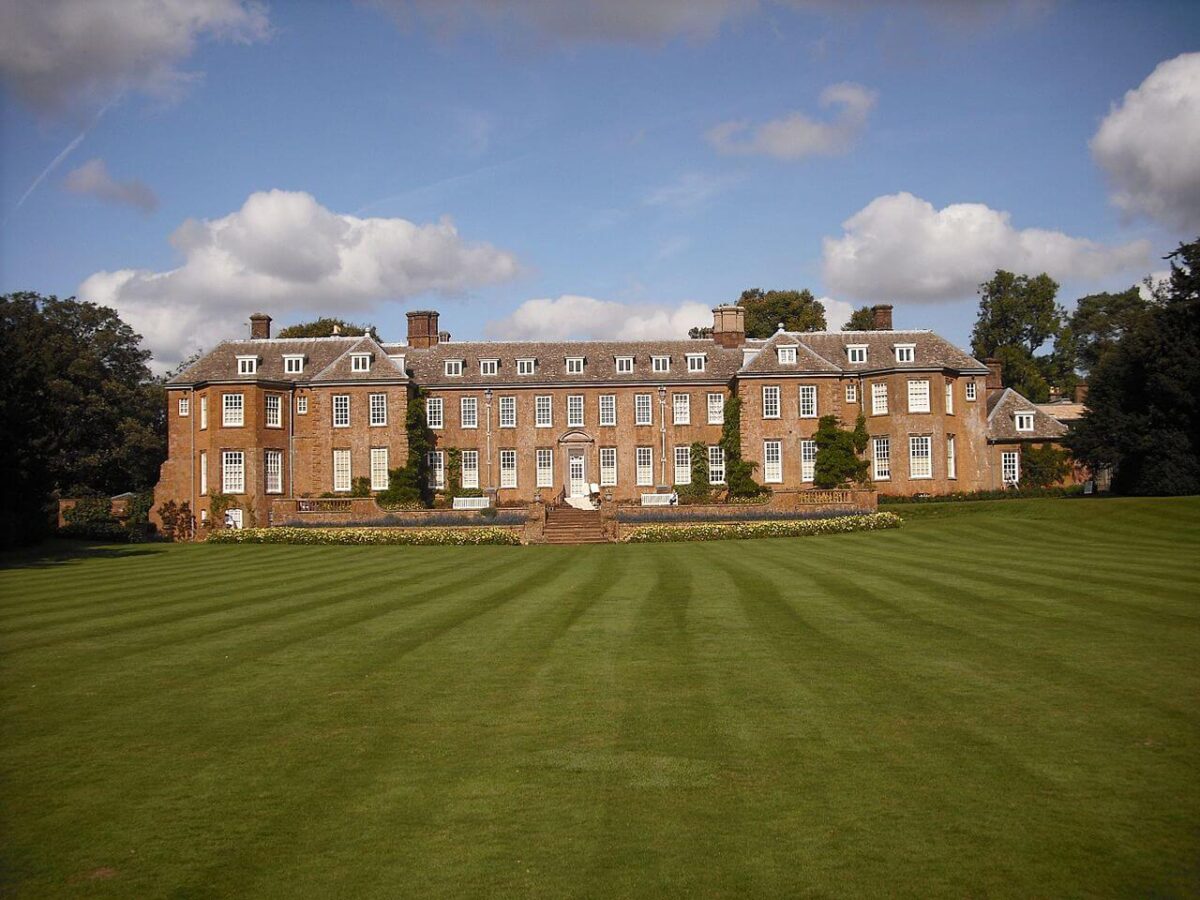
Upton House
Upton House is a long low country house near Banbury. The house was built in 1695 for Sir Rushout Cullen. The house passed the hands of several families over the centuries including the 5th Earl of Jersey and Richard Motion (the grandfather of writer Andrew Motion).
In 1927, Walter Samuel, 2nd Viscount Bearsted and his wife Lady Bearsted bought the house. They transformed the house into a 1930s country retreat with a renowned art collection.
The main attraction of Upton House is the garden. Lady Bearsted and Kitty Lloyd Jones created a beautiful garden with a kitchen garden, terraced garden, and a lake with water lilies.
Where: Banbury
Built: 1695
Style: Carolean
Visitor information: the house and garden are owned by the National Trust. Visit the website for current opening hours.
Country House Hotels in Warwickshire
Coombe Abbey
Coombe Abbey is a former English country house that has been transformed into a four-star hotel. Surrounding the hotel lies the former country house grounds that are now known as Coombe Country Park.
Originally the estate was the Abbey of Cumbe, the largest and most influential monastery in Warwickshire. In 1603, Princess Elizabeth (daughter of King James VI of Scotland) was sent to live at Coombe Abbey. At this time, the Gunpowder Plot was conceived (Elizabeth was to be kidnapped). Lord Harington received word and had Elizabeth sent to Coventry.
In 1622, the Craved family acquired the estate which they owned for 300 years. During this time the house was redesigned into Gothic Revival style.
Book your stay at Coombe Abbey Hotel
Ettington Park Hotel
Ettington Park is a 19th century Neo Gothic country house. The house is a remodel of a 17th house but between 1858 and 1862 it got its current appearance.
Ettington Park is now a four star country house hotel. Book your stay at Ettington Park Hotel

